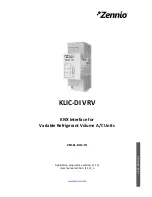
ENGINEERING MANUAL OF AUTOMATIC CONTROL
SMOKE MANAGEMENT FUNDAMENTALS
176
The buoyancy effect can cause smoke movement through
barriers above the fire and through leakage paths in walls.
However, as smoke moves away from the fire, its temperature
is lowered due to heat transfer and dilution; therefore, the effect
of buoyancy decreases with distance from the fire.
The pressure difference between a fire zone and the zone
above can be expressed as:
3
Where:
∆
P = Pressure difference, Pa
Ks = Coefficient, 3460
To = Absolute temperature of surrounding air,
Kelvin (K)
Tf = Absolute temperature of the fire
compartment, Kelvin (K)
h = Distance from the neutral plane, m
EXPANSION
The energy released by fire can move smoke by expansion
of hot gas caused by the fire. A fire increases the volume of the
heated gas and smoke and causes pressure in the fire
compartment. If there are several openings, the pressure
differences are small.
The volumetric flow of smoke out of a fire zone is greater than
the airflow into the fire zone. This situation is expressed as:
3
The relationship between volumetric airflow (smoke) and
pressure through small openings, such as cracks, is as:
3
Where:
∆
P = Pressure difference across the flow path, Pa
Q = Volumetric flow rate, m
3
/s
Kf = Coefficient, 0.839
A = Flow area, sq m
WIND VELOCITY
Wind velocity can have a significant effect on the movement
of smoke within a building. The infiltration and exfiltration of
outdoor air caused by wind can cause the smoke to move to
areas other than the fire compartment. Positive pressures on
the windward side cause infiltration; negative pressures on the
leeward side cause exfiltration. The higher the wind velocity,
the greater the pressure on the side of the building. In general,
wind velocity increases with the height from the ground. The
effects of wind on a tightly constructed building can be
negligible. However, the effects can be significant for loosely
constructed buildings or buildings with open doors or windows.
If a window breaks on the windward side of a building
because of a fire, smoke can be forced from the fire compartment
to other areas of the building, endangering lives and dominating
air movement. If a window breaks on the leeward side, the wind
can help to vent the smoke from the fire compartment to the
outside.
P
W
= C
W
x K
W
x V
2
The pressure caused by wind on a building surface is
expressed as:
3
Where:
Pw = Wind pressure, Pa
Cw = Dimensionless pressure coefficient
Kw = Coefficient, 0.6
V = Wind velocity, m/s
The pressure coefficient, C
w
, varies greatly depending on
the geometry of the building and can vary over the surface of
the wall. Values range from –0.8 to 0.8, with positive values
for windward walls and negative values for leeward walls.
Where:
Qout = Volumetric flow rate of smoke out of the fire
compartment, m
3
/s
Qin = Volumetric flow rate of air into the fire
compartment, m
3
/s
Tout = Absolute temperature of smoke leaving the
fire compartment, Kelvin (K)
Tin = Absolute temperature of air into the fire
compartment, Kelvin (K)
For tightly sealed fire zones, the pressure differences across
the barrier caused by expansion can be extremely important.
Venting or relieving of pressures created by expansion is critical
to smoke control. Venting is often accomplished with smoke
vents and smoke shafts.
∆
P = Ks x
(
)
1
To
–
1
Tf
x h
Qout
Qin
=
Tout
Tin
∆
P =
Q
KfA
2
Содержание AUTOMATIC CONTROL SI Edition
Страница 1: ...AUTOMATIC CONTROL for ENGINEERING MANUAL of COMMERCIAL BUILDINGS SI Edition ...
Страница 4: ...ENGINEERING MANUAL OF AUTOMATIC CONTROL iv ...
Страница 6: ...ENGINEERING MANUAL OF AUTOMATIC CONTROL vi ...
Страница 11: ...SMOKE MANAGEMENT FUNDAMENTALS ENGINEERING MANUAL OF AUTOMATIC CONTROL 1 CONTROL SYSTEM FUNDAMENTALS ...
Страница 12: ...ENGINEERING MANUAL OF AUTOMATIC CONTROL SMOKE MANAGEMENT FUNDAMENTALS 2 SMOKE MANAGEMENT FUNDAMENTALS ...
Страница 46: ...ENGINEERING MANUAL OF AUTOMATIC CONTROL CONTROL FUNDAMENTALS 36 ...
Страница 66: ...ENGINEERING MANUAL OF AUTOMATIC CONTROL PSYCHROMETRIC CHART FUNDAMENTALS 56 ...
Страница 128: ...ENGINEERING MANUAL OF AUTOMATIC CONTROL ELECTRIC CONTROL FUNDAMENTALS 118 ...
Страница 158: ...MICROPROCESSOR BASED DDC FUNDAMENTALS 148 ENGINEERING MANUAL OF AUTOMATIC CONTROL ...
Страница 208: ...ENGINEERING MANUAL OF AUTOMATIC CONTROL BUILDING MANAGEMENT SYSTEM FUNDAMENTALS 198 ...
Страница 209: ...SMOKE MANAGEMENT FUNDAMENTALS ENGINEERING MANUAL OF AUTOMATIC CONTROL 199 CONTROL SYSTEM APPLICATIONS ...
Страница 210: ...ENGINEERING MANUAL OF AUTOMATIC CONTROL SMOKE MANAGEMENT FUNDAMENTALS 200 SMOKE MANAGEMENT FUNDAMENTALS ...
Страница 435: ...SMOKE MANAGEMENT FUNDAMENTALS ENGINEERING MANUAL OF AUTOMATIC CONTROL 425 ENGINEERING INFORMATION ...
Страница 436: ...ENGINEERING MANUAL OF AUTOMATIC CONTROL SMOKE MANAGEMENT FUNDAMENTALS 426 SMOKE MANAGEMENT FUNDAMENTALS ...
Страница 493: ...INDEX ENGINEERING MANUAL OF AUTOMATIC CONTROL 483 INDEX ...
Страница 506: ...ENGINEERING MANUAL OF AUTOMATIC CONTROL INDEX 496 NOTES ...
Страница 507: ...INDEX ENGINEERING MANUAL OF AUTOMATIC CONTROL 497 NOTES ...
Страница 508: ...ENGINEERING MANUAL OF AUTOMATIC CONTROL INDEX 498 NOTES ...
Страница 509: ...INDEX ENGINEERING MANUAL OF AUTOMATIC CONTROL 499 NOTES ...
Страница 510: ...ENGINEERING MANUAL OF AUTOMATIC CONTROL INDEX 500 NOTES ...
Страница 511: ...INDEX ENGINEERING MANUAL OF AUTOMATIC CONTROL 501 NOTES ...
Страница 512: ...ENGINEERING MANUAL OF AUTOMATIC CONTROL INDEX 502 NOTES ...















































